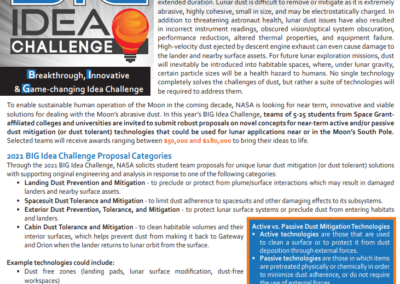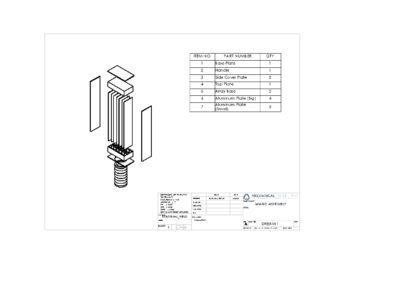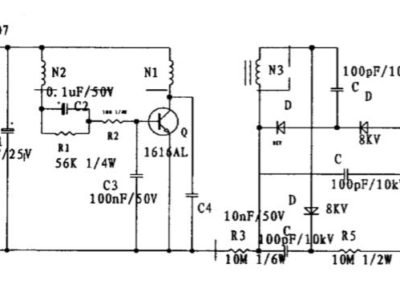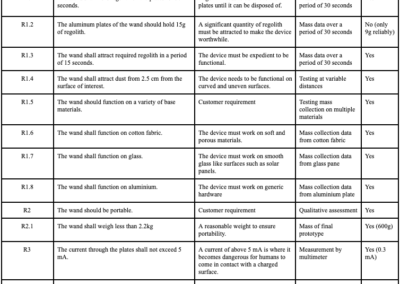DREAM System | Dust Mitigation Technology for Lunar Applications
Overview
The Dust Removing Electrostatic Attraction Mechanism, or the DREAM system, is a versatile, portable technology designed to remove lunar regolith from instrumentation and equipment used during expeditions on the Moon. Designed in response to NASA’s BIG Ideas Challenge, DREAM aims to help the space program reach new heights. The BIG Ideas Challenge is an annual call for university students to develop solutions for the space industry’s most pressing issues. The prompt for the 2020-2021 challenge was to better equip future exploratory missions to deal with the Moon’s abrasive dust – one of the most significant barriers to establishing a long-term human presence beyond Earth.
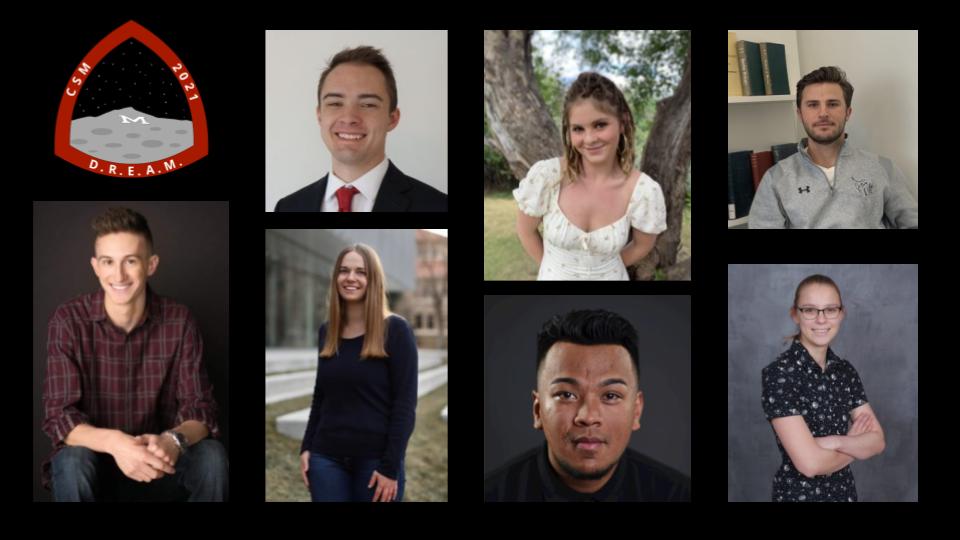
So why is this dust such an issue?
Typically referred to as regolith, the lunar surface is blanketed with miniscule, abrasive particles that tend to hold an electrostatic charge. These properties pose a significant threat to astronaut health and sensitive lunar equipment, both of which have the potential to compromise the integrity of a mission should adverse circumstances arise. However, the presence of a static charge is the crux of our solution, and the reason why the DREAM system would be a useful addition to the Artemis program. DREAM leverages this harmful property of lunar regolith in order to negate the damage caused by moon dust.
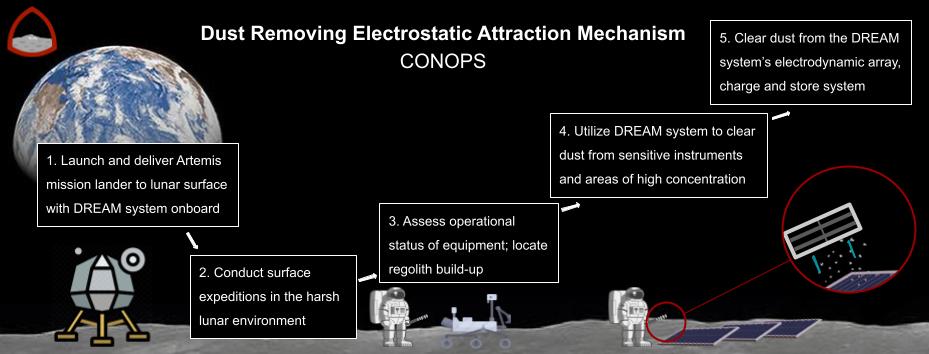
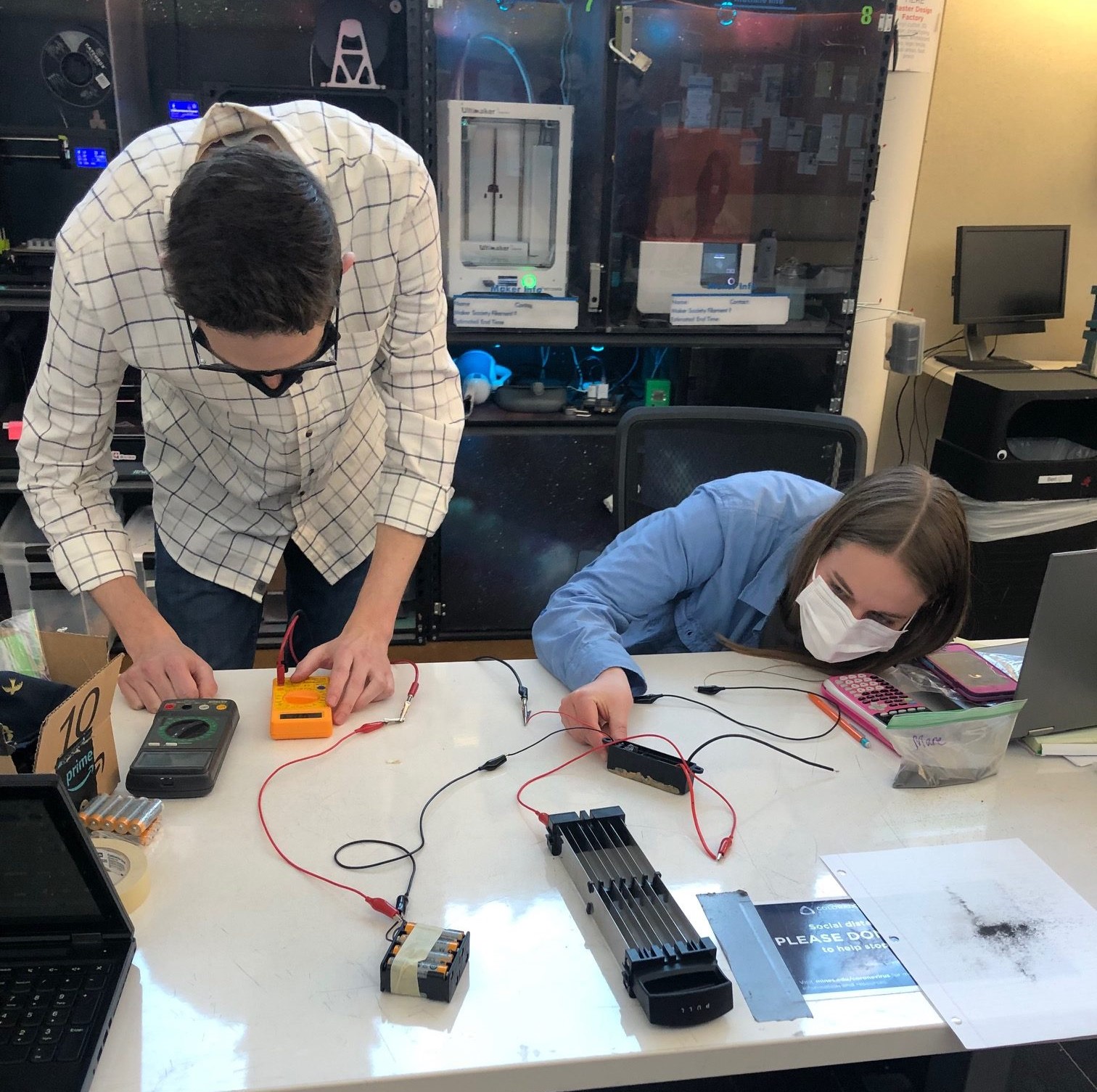
Live Zoom Chat
Use the link below to join us live from 8:00 – 10:30 a.m. on April 29!
Meeting ID: 871 803 2256
Team Members
- Ian BarrettHakanson
- Julia Brown
- Tyler Campbell
- Jason Hall
- Hanzelle Kleeman
- Rathana Preap
- Claire Thomas
The Client
- NASA
- Dr. Angel Abbud-Madrid – Space Resources Director
Acknowledgements
Project Advisor: James Beseda
Technical Advisor: Dr. Kevin Cannon
Video
Elevator Pitch
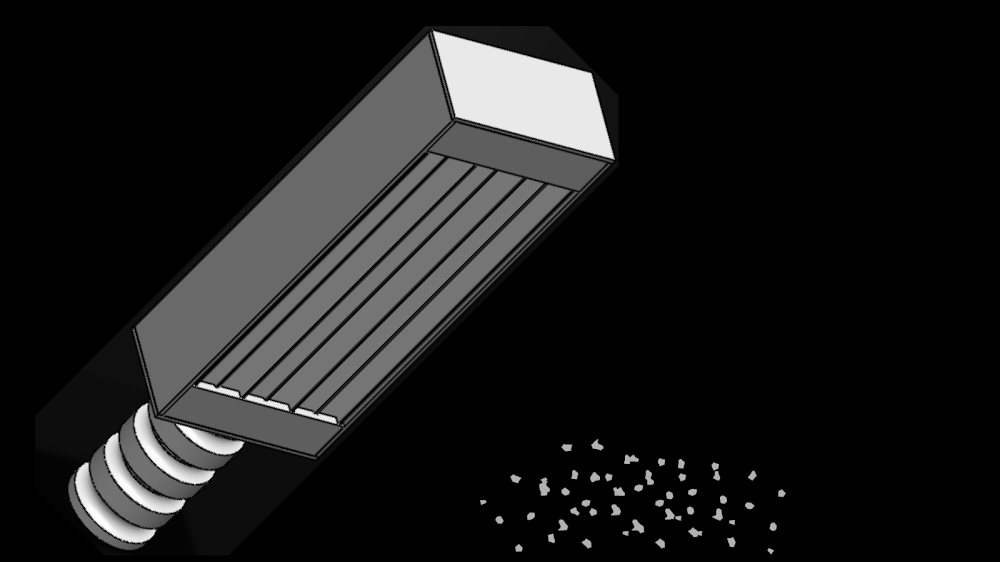 We are a team of seven mechanical engineers who set out to develop a solution to NASA’s BIG Ideas challenge. This past year, the challenge centered around mitigating the adverse effects of lunar dust for future space exploration missions. In January, we were joined by six new Senior Design students, four of which are mechanical engineers while the remaining two are electrical engineers, forming an effective team with a variety of experiences and backgrounds. Over the last nine months we have been developing the DREAM system, an innovative technology for the removal of dust from exterior surfaces and equipment on the lunar surface. We are pleased with the progress that we have made, and look forward to seeing where this project goes in the future.
We are a team of seven mechanical engineers who set out to develop a solution to NASA’s BIG Ideas challenge. This past year, the challenge centered around mitigating the adverse effects of lunar dust for future space exploration missions. In January, we were joined by six new Senior Design students, four of which are mechanical engineers while the remaining two are electrical engineers, forming an effective team with a variety of experiences and backgrounds. Over the last nine months we have been developing the DREAM system, an innovative technology for the removal of dust from exterior surfaces and equipment on the lunar surface. We are pleased with the progress that we have made, and look forward to seeing where this project goes in the future.
Design Approach
Our first step in developing a solution was to gain an understanding of previously proposed technologies for dust mitigation, as well as NASA’s feedback regarding those proposals. Existing proposals for the mitigation of lunar dust include mechanical, electrostatic, fluidal, and passive methods. No existing method offers a satisfactory solution for long-term, reliable dust mitigation. In many cases, the fault of these existing technologies is that they lack versatility, require an unsustainable amount of energy in order to function, or require too much effort on the part of the crew. Our team’s concept selection prioritized addressing these challenges.
With this in mind, our team formulated several potential solutions. We consulted with experts in the field of lunar simulants and industry professionals familiar with NASA’s project management structure to better understand the feasibility of different approaches. From there, our team conducted initial testing to verify the theoretical physics and experimental behaviors behind each design, compiling the most promising designs into a design matrix. Ultimately, our team decided to proceed with the DREAM system. After establishing a path forward, our team constructed a series of functional prototypes with which to verify that DREAM operates efficiently within NASA’s lunar architecture.
The SCRUM project management framework was utilized throughout our team’s design process. Every member of our team had a clearly defined role across the duration of the development timeline, and the iterative nature of the process ensured that feedback from experts and from previous testing was incorporated into each successive stage of the project. Furthermore, the utmost care was taken to ensure that the safety of our team members remained paramount when working with potentially dangerous power levels.
Design Solution
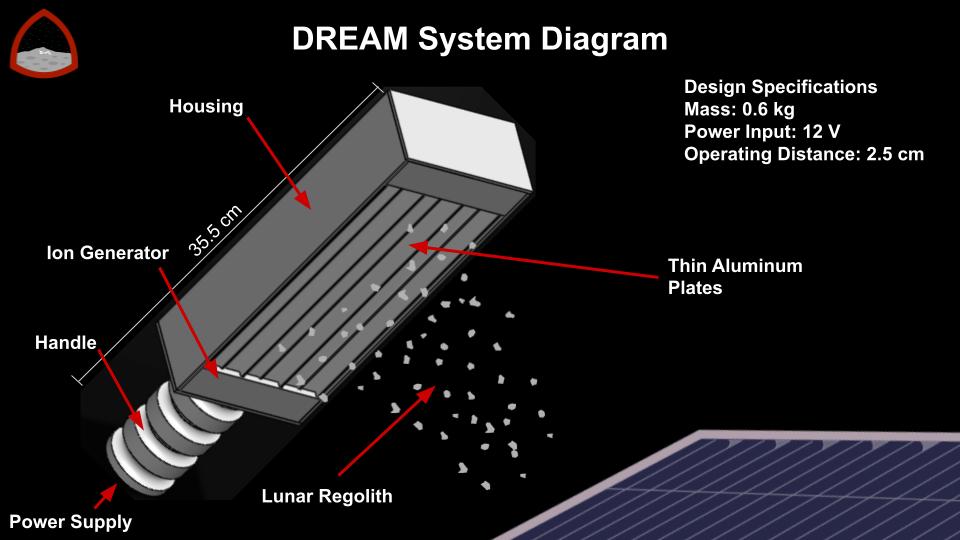
DREAM enables astronauts to easily remove dust from external measurement systems, as well as from payloads and astronauts entering habitats. An electrostatic approach is optimal for dust removal because it is not affected by the varying properties of lunar regolith across the moon’s surface, requires minimal power input, minimizes interference with the existing lunar architecture, and fits in a hand-held tool. The DREAM system consists of an array of thin aluminum plates that generate a localized electric field, an ion generator that electrostatically charges the plates, and a microfiber material to trap regolith. The electric field that emanates from the charged plates, exerting a force on regolith particles. Utilizing this force, DREAM is capable of removing dust from critical mission systems and associated hardware.
If we are to consider the DREAM system a success, it must meet a set of design criteria put forth by NASA. The proposed technology must:
- Be able to manage and mitigate abrasive dust
- Mitigate small particles
- Present minimal barriers to NASA’s adoption:
- Low power input
- Low mass
- Manageable size
- Be cost-effective
- Be non-flammable
- Operate in the harsh environment of the lunar south pole
- Temperatures from -243°C to -49°C
- Multiple day and night cycles
- Reach a Technology Readiness Level (TRL) of 4
Most importantly, the DREAM system does in fact manage and mitigate the effects of abrasive lunar dust, given the fact that it removes particulate matter from critical systems. The particles that the DREAM system was tested with lunar simulants that closely match the composition of regolith found on the lunar surface. DREAM can readily integrate with NASA’s proposed lunar architecture due to its lightweight, cost-effective nature. Additionally, the device is no bigger than a shoe box, ensuring that it can be operated and stowed without issue. Low energy requirements certify that power will not be sacrificed elsewhere in the lunar module in order to operate the device. Extreme temperature ranges have no effect on DREAM’s fundamental operating principles. Our testing plan validated the working prototype in a laboratory environment, thereby advancing the system to TRL 4, in accordance with NASA’s TRL definitions.
Next Steps
The path to successful flight for DREAM will be addressed in a staged process of design, build, test, and improvement to meet TRL 9 before the launch of the 2026 Artemis mission. To increase the amount of dust collected by the device, further tests can explore the amount of voltage and amperage delivered to the ion generator in order to optimize its function. Our testing indicated the existence of a “sweet spot,” at which the most efficient ion generator function can be achieved. Ultimately, since the underlying physics of the DREAM system are well-known, risk of failure is low. If the Colorado School of Mines continues to work on this project, our team recommends partnering with Deep Space Systems for testing. This partnership would provide expertise to ensure components adhere to all NASA standards and requirements, as well as aid in risk retirement. Further development of DREAM would provide a valuable tool to enable a sustained human presence among the stars.
Meet the Team
Ian BarrettHakanson
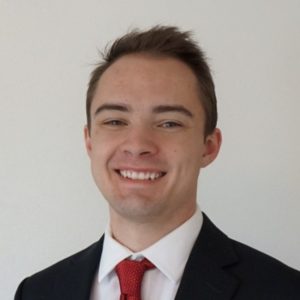 Originally from Missoula, Montana, I came to Mines to study mechanical engineering. Outside of school, I like to hike and ski Colorado’s beautiful mountains. After graduating this May, I look forward to a career in the aerospace industry.
Originally from Missoula, Montana, I came to Mines to study mechanical engineering. Outside of school, I like to hike and ski Colorado’s beautiful mountains. After graduating this May, I look forward to a career in the aerospace industry.
Julia Brown
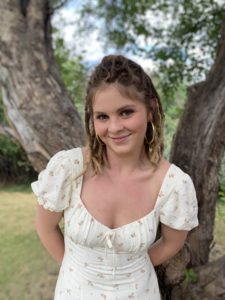
I am majoring in mechanical engineering with a minor in humanitarian engineering for community development and will graduate here in May! I really enjoy horseback riding, snowboarding, reading and running. After graduation I plan on going into the Peace Corps serving as Community Economic Development Facilitator in Senegal, Africa or graduate school in astrodynamics.
Tyler Campbell
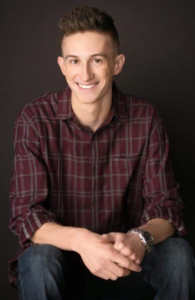
Originally from Mesa, Arizona, I will be graduating with my B.S. in mechanical engineering here in May and could not be more excited! When I am not doing homework, you can usually find me at a local brewery or tossing the frisbee around with some friends. After graduation I look forward to moving out to Sunnyvale, California to begin a Systems Engineering position with Lockheed-Martin Space!
Jason Hall
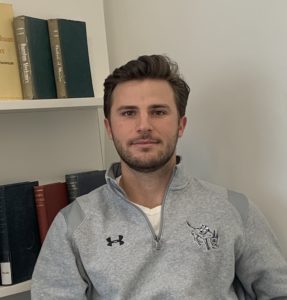
I am a senior in mechanical engineering, graduating this May. For the project, I led the dust containment team finding innovative ways to help the DREAM system retrieve and trap the lunar regolith. I also assisted with the testing and early fabrication of the prototype. Outside of senior design, I am on the baseball team here at school where I play in the outfield for the Orediggers. After graduation, I will be working for Lockheed Martin as a systems engineer at the Waterton Canyon location.
Hanzelle Kleeman
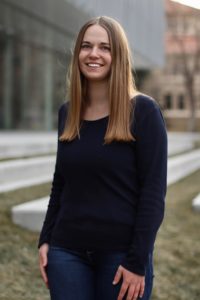
I am originally from Houston, TX and will be graduating from the mechanical engineering and public affairs programs here in May! I am also an active member of student government and club tennis. Off campus, you can find me hiking or skiing in the mountains. My other hobbies include graphite drawing, reading, and writing. After graduation, I want to work on problems at the interface of science, technology, and society. Starting in the fall, I will be pursuing a PhD in engineering and public policy at Carnegie Mellon University.
Rathana Preap
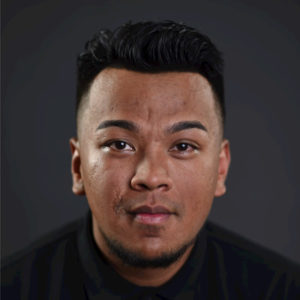
Hey! My name is Rathana Preap, but I go by Rath for short. I’m about to be the first person in my entire family to graduate with a bachelors here in a couple of weeks. I couldn’t be more excited! You’ll find me either working on my car or watching all the anime. I can give you recommendations!
Claire Thomas
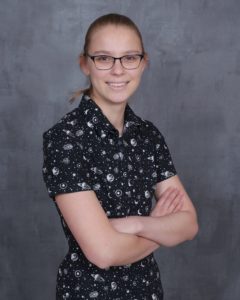
I am a mechanical engineering major looking forward to graduation. After graduation I plan on working at the Sierra Nevada Corporation here in Centennial, CO. In my free time, I do jigsaw puzzles competitively and dive.


